Thanks to the heartfelt generosity of our global community, the original shedra at Tsoknyi Gechak Ling was successfully built and is now thriving. This achievement laid the foundation for a new generation of female practitioners to receive a profound education rooted in the Dharma.
Now, the need is growing.
Out of deep compassion, Tsoknyi Rinpoche continues to welcome every girl who arrives at Gechak, offering them a home, a fully modern education through Tsoknyi Gechak School, and—when they are ready—the opportunity to enter shedra. As more and more girls take this path, the existing shedra can no longer accommodate the rising number of dedicated students.
In response, we are building a new shedra.
This is a rare and beautiful opportunity to support Rinpoche’s unwavering commitment to nurturing these nuns’ spiritual and academic training. With your help, we can meet this moment—creating space for their aspirations to flourish and ensuring the Dharma continues to shine through the lives of these remarkable women.
The new shedra will:
- Provide advanced philosophical and spiritual education for up to 200 nuns
- Create a cutting-edge and fully modern learning environment that honors traditional Buddhist scholarship
- Develop a comprehensive curriculum integrating classical Buddhist studies with contemporary educational pedagogy
- Establish a center for research, cultural preservation, and women’s spiritual leadership
The new shedra will be a multi-purpose complex featuring:
- Modern classrooms with advanced learning technologies
- A central library and research center
- Meditation halls and practice spaces
- Sustainable living quarters
- Administrative and community support facilities
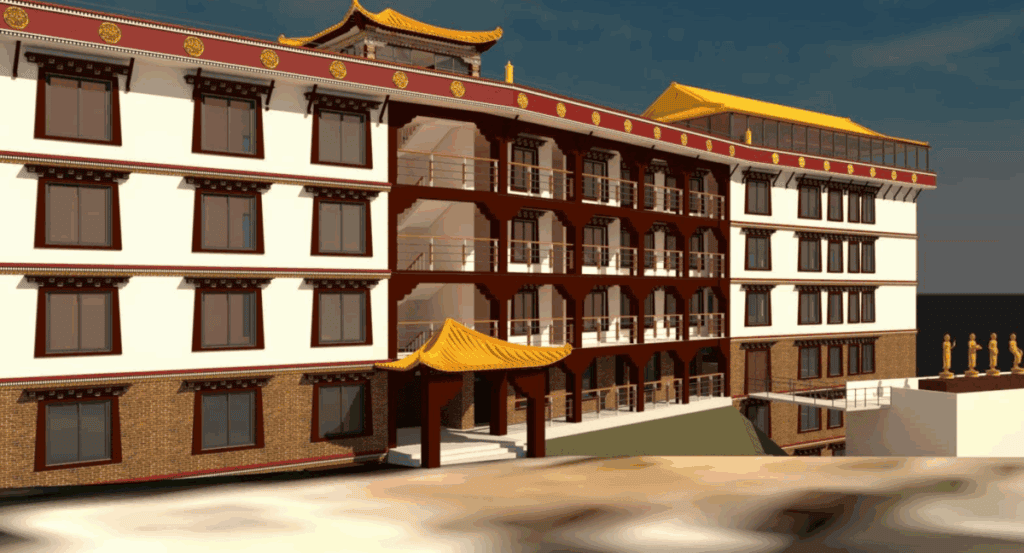
The initial budget for the new shedra is $2.7M and the global community aims to raise this by the end of 2027. We are seeking forward-thinking philanthropic partners to support Tsoknyi Rinpoche’s visionary leadership in the preservation of advanced Tibetan monastic studies, particularly amongst female monastics, who have historically lacked support for advanced training.
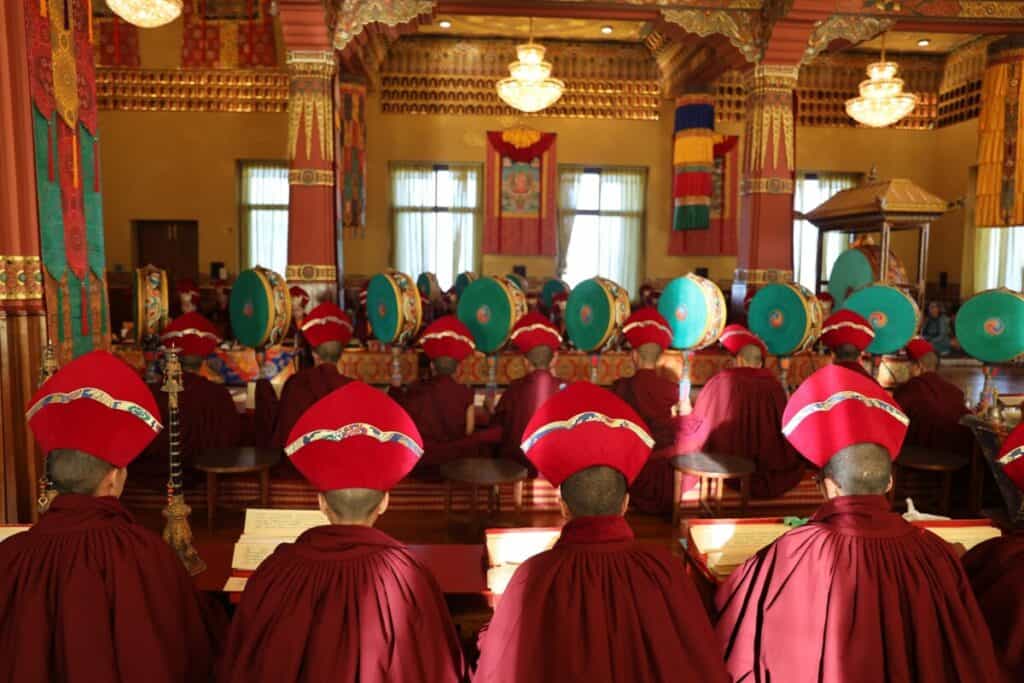
In the 19th century, Tsoknyi Rinpoche the First designed and developed a system of practices for the transformation and enlightenment of female practitioners. He envisioned a time when these women would become among the most accomplished Buddhist practitioners in the world. The value of women’s education and empowerment are clear to modern people, but they were not apparent nor valued in 19th century Tibet. The foresight that qualities strong in the female form, qualities such as gentleness, motherly care, and loving energy, would be vital for a world in desperate need of healing, are testament to the visionary leadership of Tsoknyi Rinpoche the First.
Tsoknyi Rinpoche the Third has recognized the need for holistic and modern educational and social development alongside the traditional education refined through centuries of Buddhist tradition. He has created a fully modern secondary school, the Tsoknyi Gechak School, where young girls and women are treated with the dignity and kindness needed to foster healthy human living, which Rinpoche describes as the basis for spiritual development. Graduates from the Gechak School have the opportunity to join Shedra, a deep and thorough study program in Buddhist philosophy, which is roughly equivalent to a high school diploma, BA, and MA in Buddhist philosophy rolled into a continuous nine to twelve year full time course of study. The curriculum includes Buddhist philosophical systems in increasing sophistication, classical Tibetan, history, logic, poetry, metaphysics, theory of perception, and higher studies of Vajrayana. The students are also trained in skills such as composition, exposition, and debate. At the successful conclusion of shedra studies, a nun will receive the Lopon-ma (Acharya) degree. This means they are qualified to teach a wide range of topics in Buddhist philosophy.
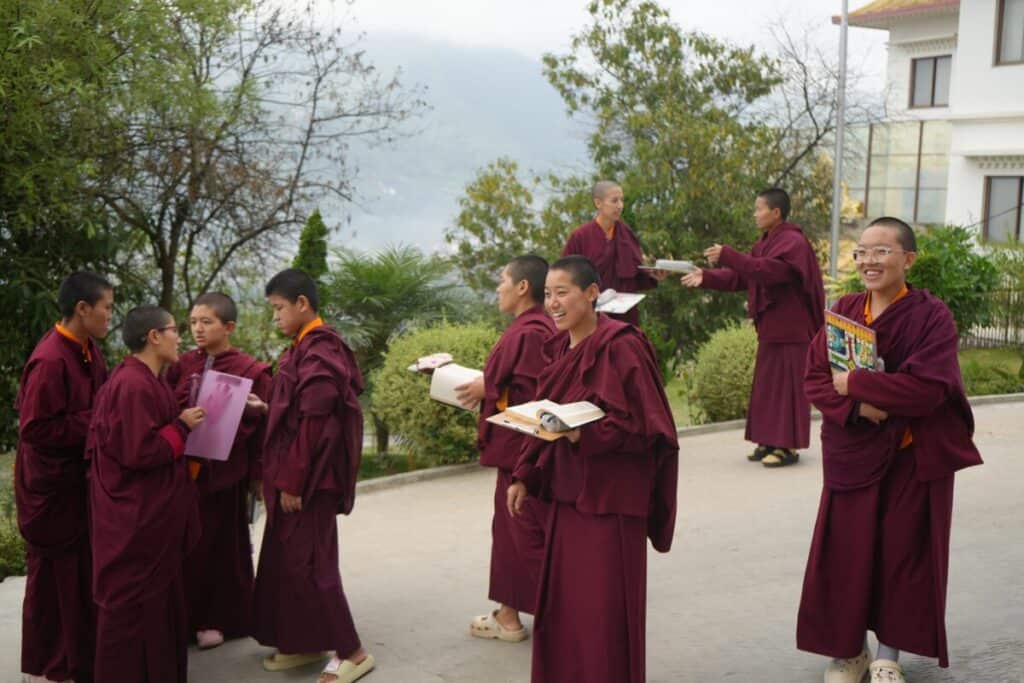
Thorough and thriving Buddhist monastic colleges (shedra) are increasingly rare in the modern world, and especially colleges specifically for women. It was only in the past few decades that these comprehensive higher training courses were even available for nuns. The nuns’ monastic college at Tsoknyi Gechak Ling has unique qualities. It combines traditional depth in its core curriculum (based on the leading standard curriculum from Namdroling Monastery in South India) with a modern emphasis on the nuns simultaneously learning English and Nepali (along with Tibetan) as well as modern science. The plan for the near future is to expand the curriculum even further to include western psychology and modern pedagogy, to prepare the nuns to be ready to teach western students as well.
The existing shedra was thoughtfully designed with the future in mind, a future in which more girls and women would come to Tsoknyi Gechak Ling seeking deep study and practice. That future is now.
Since its completion, the current shedra has been a remarkable success, graduating six cohorts and awarding numerous Lopon-ma degrees. These accomplished women are helping to fill a critical gap across Nepal and India, where female scholars—Lopon-mas and Khenmos—remain few. In time, Rinpoche envisions some of them teaching internationally, sharing the Dharma wherever his connections reach.
As the new shedra takes shape, the existing building will be repurposed into much-needed living quarters for the growing number of shedra nuns. Classrooms and study spaces will move to the new facility, allowing this next generation of practitioners to thrive in both study and community.
Over the past 15 years, the development of Tsoknyi Gechak Ling has been a story of vision, generosity, and exceptional execution. Guided by Tsoknyi Rinpoche’s compassionate leadership and supported by a global community of practitioners and donors, this campus has grown steadily and successfully—on time, on budget, and always in service of the nuns’ spiritual and educational path. Each building has met a specific need, forming a vibrant monastic environment where young girls and women can train, study, and flourish.
What began in 2009 with a small group of nuns and a single shrine hall has become a thriving monastic campus in the hills above Kathmandu. In response to the arrival of more than 80 young girls from Rinpoche’s home region of Nubri, the original building (1) was quickly transformed into a makeshift school and residence, sparking the need for long-term infrastructure.
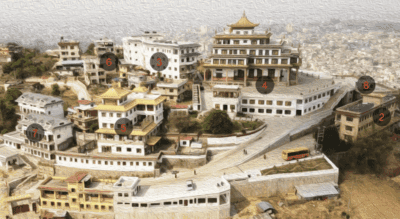
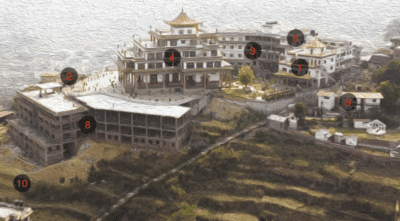
Since then, the community has completed an impressive series of construction projects: two modern primary schools (2 & 8), a shedra building (3), a main shrine hall (4), an international retreat center (7), modern administrative, dining, and kitchen facilities (6), and the Pema Chödrön drubde: a three-year retreat center (5). With each phase, donors have stepped forward with remarkable generosity, keeping pace with growth while maintaining high standards of quality and care.
Through all the projects that comprise the campus of Tsoknyi Gechak Ling, every structure has been thoughtfully designed and fully funded. As we now begin the next major step—constructing a new shedra to meet the growing number of nuns entering advanced study—we do so with gratitude for all that’s been accomplished and with confidence in the road ahead.
